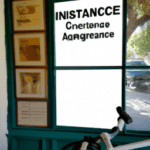Imagine this: you’re riding your bike down the road, feeling the breeze in your hair and the sense of freedom that comes with it. However, what if something unexpected occurs and you end up in a accident? This is where insurance can be a lifesaver.
In this article, I’ll be exploring the different types of insurance that can cover bicycle accidents. From liability insurance to personal injury protection, we’ll dive into the options that can provide you with peace of mind while you pedal.
Key Takeaways
- Homeowners/Renters Insurance, Health Insurance, and Auto Insurance can provide coverage for bicycle accidents, but the specific coverage varies depending on the policy and insurance provider.
- It is important to review the terms and conditions of each insurance policy to understand the extent of coverage, including any limitations or exclusions.
- Additional insurance options such as Umbrella Insurance, Travel Insurance, Legal Protection Insurance, and Personal Accident Insurance can provide enhanced protection and peace of mind in case of bicycle accidents.
- Understanding coverage limits and exclusions, reviewing policy details, and considering additional coverage options are crucial for ensuring comprehensive protection for unforeseen circumstances arising from bicycle accidents.
Liability Insurance
Liability insurance covers you in case you are at fault for a bicycle accident. This type of coverage helps protect you financially by paying for damages and injuries caused to others. When it comes to bicycle accidents, liability coverage typically comes with insurance limits, which determine the maximum amount the insurance company will pay. These limits can vary depending on your policy and the state you live in.
It’s important to understand your liability coverage limits, as they can affect your financial responsibility if you are found at fault for an accident.
Now, let’s move on to the next section about personal injury protection (PIP) and how it can further protect you in the event of a bicycle accident.
Personal Injury Protection (PIP)
If you’re injured in a bicycle accident, PIP can help with medical expenses. Personal Injury Protection (PIP) is a type of insurance coverage that can provide benefits if you are injured in an accident, regardless of who is at fault. PIP benefits typically include coverage for medical expenses, lost wages, and other related costs. However, it’s important to note that PIP coverage limits vary depending on the state and the policy you have. Some states have mandatory PIP coverage, while others offer it as an optional add-on. To give you a better understanding, here’s a table summarizing the PIP benefits and coverage limits in different states:
| State | PIP Benefits | PIP Coverage Limits |
|---|---|---|
| A | X | Y |
| B | X | Y |
| C | X | Y |
| D | X | Y |
| E | X | Y |
Moving on to the next topic, uninsured/underinsured motorist coverage can provide additional protection in case of an accident involving a driver who doesn’t have enough insurance.
Uninsured/Underinsured Motorist Coverage
Uninsured/Underinsured Motorist Coverage provides additional protection in the event of an accident with a driver who lacks sufficient insurance. This type of coverage is important for cyclists, as they are particularly vulnerable to accidents with motor vehicles.
In the unfortunate event that you are involved in a bicycle accident with an uninsured or underinsured driver, this coverage can help compensate for your injuries and damages. Uninsured motorist claims can be filed to seek compensation for medical expenses, property damage, lost wages, and pain and suffering. It is crucial to have this coverage in place to ensure that you are adequately protected in case of an accident.
Now, let’s move on to the next section about medical payments coverage, which provides additional financial support for medical expenses.
Medical Payments Coverage
Medical Payments Coverage, also known as MedPay, can help with the costs of medical treatment after an accident. This type of insurance coverage provides reimbursement for medical expenses resulting from a bicycle accident. It is important to understand that MedPay is not a liability coverage, meaning it does not cover damages to another person’s property or injuries they may sustain.
Instead, it focuses solely on the insured individual’s medical expenses. The coverage typically includes reimbursement for hospital visits, doctor’s fees, surgeries, and other necessary medical treatments. However, it is important to note that there may be limits to the amount of coverage provided by MedPay.
Once the medical expenses are taken care of, the focus shifts to property damage coverage, which addresses the costs of repairing or replacing damaged bicycles or other property.
Property Damage Coverage
Property damage coverage helps with the costs of repairing or replacing damaged property. In the case of bicycle accidents, this coverage can assist with the expenses related to repairing or replacing the bicycle itself. The insurance company will typically pay for the necessary repairs or provide reimbursement for the value of the bicycle if it is deemed a total loss.
To give you a clearer picture, here is a table showing the reimbursement limits for bicycle repair coverage:
| Type of Damage | Reimbursement Limit |
|---|---|
| Minor Scratches | $100 |
| Moderate Damage | $300 |
| Severe Damage | $500 |
| Total Loss | $1000 |
This table illustrates the maximum amount the insurance company will cover for each type of damage. Keep in mind that these reimbursement limits may vary depending on your insurance policy.
Next, we will discuss comprehensive coverage, which provides additional protection beyond just property damage.
Comprehensive Coverage
Comprehensive coverage offers additional protection for a variety of incidents that may occur while driving. This coverage can provide financial support for repairing or replacing your bike if it is damaged or stolen. It extends beyond just accidents involving other vehicles. For example, if your bike is damaged in a fire or a natural disaster, comprehensive coverage can help cover the costs of repairs or replacement.
In addition, comprehensive coverage often includes coverage for vandalism or theft of your bike, giving you peace of mind while you’re out riding. Understanding the bicycle accident claim process and having comprehensive coverage can ensure that you’re fully protected in case of any unforeseen incidents.
Moving forward, let’s explore the benefits of collision coverage for bicycle accidents.
Collision Coverage
If you’re involved in a collision while riding your bike, collision coverage can help cover the costs of repairing or replacing your bike. This type of insurance is typically included as part of an auto insurance policy.
Collision coverage provides financial protection if you collide with another vehicle, object, or even if you fall off your bike. It can help pay for the repairs or replacement of your bicycle, up to the policy’s coverage limits. However, it’s important to note that collision coverage usually comes with a deductible, which is the amount you’ll have to pay out of pocket before the insurance kicks in.
Additionally, collision coverage does not typically cover bicycle repair coverage or bike theft coverage. For these specific types of coverage, you may need to consider purchasing a bicycle-specific insurance policy. This type of policy is designed to provide tailored coverage for your bicycle, giving you peace of mind while riding.
Bicycle-specific Insurance Policies
When it comes to bicycle accidents, having collision coverage on your insurance policy can provide some financial protection. However, there are also bicycle-specific insurance policies available that offer more comprehensive coverage. These policies are specifically designed to meet the unique needs of cyclists and can provide coverage for medical expenses, bike repairs, and even liability in the event of a bicycle accident.
Bicycle-specific insurance policies can be a great option for avid cyclists who want to ensure they are fully protected in the event of an accident. These policies often offer higher coverage limits and additional benefits that may not be included in a standard insurance policy. It’s important to note that the types of bicycle insurance available may vary depending on your location and insurance provider.
Moving forward, let’s now discuss how homeowners/renters insurance can also provide coverage for bicycle accidents.
Homeowners/Renters Insurance
Homeowners/renters insurance can provide financial protection in the event of a bicycle accident. These policies primarily cover damage to your home or personal property. However, they often include personal liability coverage, which can help pay for medical expenses and legal fees if you are at fault for an accident. This coverage, known as personal injury protection (PIP), can extend to injuries sustained while riding a bicycle.
It is important to note that the extent of coverage can vary depending on your specific policy and insurance provider. Therefore, it is crucial to review the terms and conditions of your homeowners/renters insurance policy to understand the coverage available for bicycle accidents.
Transitioning into the subsequent section about health insurance, it is also worth exploring how health insurance can provide additional coverage for bicycle accidents.
Health Insurance
Health insurance can provide financial protection and assistance in the event of injuries sustained while riding a bicycle. It is important to understand that health insurance covers medical expenses related to bicycle accidents, such as emergency room visits, hospital stays, surgeries, and rehabilitation.
However, coverage may vary depending on the specific health insurance plan, so it is crucial to review the policy details and understand the limitations and exclusions. Some health insurance plans may also offer additional benefits like coverage for medical equipment or physical therapy.
It is important to contact your health insurance provider to understand the specific coverage provided for bicycle accidents.
In the next section about auto insurance, we will explore how it can also play a role in covering bicycle accidents.
Auto Insurance
If you ride a bicycle, it’s important to understand how auto insurance can provide coverage in the event of an accident.
-
Liability coverage: Auto insurance can cover the costs if you are at fault in a bicycle accident. It can pay for the other person’s medical bills, property damage, and legal fees.
-
Uninsured/underinsured motorist coverage: This type of coverage can protect you if you are involved in a bicycle accident with a driver who does not have insurance or has insufficient coverage. It can help pay for your medical expenses and damages.
-
Personal injury protection: Auto insurance policies may include personal injury protection, which can cover your medical bills, lost wages, and other accident-related expenses, regardless of who is at fault.
Understanding the different types of auto insurance coverage can help ensure you are adequately protected in case of a bicycle accident.
Now, let’s move on to discussing umbrella insurance.
Umbrella Insurance
To ensure you have additional protection beyond your regular policies, consider umbrella insurance. Umbrella insurance is a type of coverage that provides extra liability protection beyond the limits of your auto, home, or other insurance policies. It acts as a safety net, offering higher coverage limits to protect your assets in case of a lawsuit or major accident. The benefits of umbrella insurance are substantial, as it not only provides additional liability coverage but also covers legal fees and settlements. The cost of umbrella insurance varies depending on factors such as the amount of coverage you need and your personal risk profile. It is important to note that umbrella insurance is different from liability insurance, as it provides broader coverage and higher limits. With umbrella insurance, you can have peace of mind knowing that you have extra protection in case of unforeseen circumstances. Moving on to the next topic, let’s discuss travel insurance.
Travel Insurance
When planning a trip, make sure you consider travel insurance for added peace of mind. Travel insurance coverage provides protection in case of unforeseen events while you are away from home. It typically includes medical expenses, trip cancellation or interruption, lost baggage, and emergency medical evacuation.
The benefits of travel insurance are numerous. If you fall ill or get injured during your trip, travel insurance can cover your medical expenses and even provide emergency medical transportation back home. Additionally, if your trip gets cancelled or cut short due to unexpected circumstances like severe weather or a family emergency, travel insurance can reimburse you for non-refundable expenses.
It is important to understand the specific coverage and limits of your travel insurance policy before embarking on your journey. As we move into the next section about legal protection insurance, it is crucial to ensure you have comprehensive coverage for all potential risks during your travels.
Legal Protection Insurance
Consider obtaining legal protection insurance to safeguard yourself from any unexpected legal issues that may arise during your travels. This type of insurance provides coverage for legal representation and can help cover the costs associated with legal proceedings. It is important to note that legal protection insurance typically has coverage limits, meaning there may be a maximum amount that the insurance company will pay towards your legal expenses. Therefore, it is essential to carefully review the policy terms and conditions to understand the extent of the coverage provided.
With legal protection insurance, you can have peace of mind knowing that you have financial support in case you encounter any legal challenges while traveling.
Moving on to the next section about personal accident insurance…
Personal Accident Insurance
You should definitely look into personal accident insurance to protect yourself in case of any unforeseen accidents during your travels. Personal accident insurance provides coverage for medical expenses, disability, and death resulting from an accident.
It can be especially beneficial for cyclists who are more vulnerable to accidents while on the road. Bicycle specific insurance is a type of personal accident insurance that is tailored specifically for cyclists. It provides coverage for injuries sustained while riding a bicycle, such as fractures, dislocations, and sprains. This type of insurance can also provide compensation for bicycle damage or theft.
Having personal accident insurance, especially bicycle specific insurance, can give you peace of mind knowing that you are financially protected in the event of an accident.
Frequently Asked Questions
Does liability insurance cover damage to my bicycle caused by a third party?
Yes, liability insurance typically covers damage to my bicycle caused by a third party. To file a claim, I need to go through the insurance claim process and there may be coverage limits to consider.
Can I use personal injury protection (PIP) to cover medical expenses if I am injured while riding a bicycle?
Yes, I can use personal injury protection (PIP) to cover medical expenses if I’m injured while riding a bicycle. However, PIP is typically meant for non-bicycle related injuries, and there may be limitations to its coverage.
Is uninsured/underinsured motorist coverage applicable if I am involved in a hit-and-run accident while cycling?
If I am involved in a hit-and-run accident while cycling, uninsured/underinsured motorist coverage can provide compensation for bicycle accidents. This coverage helps cover medical expenses and damages caused by the unidentified driver.
Will medical payments coverage cover the cost of rehabilitation or physical therapy after a bicycle accident?
Medical payments coverage, bless its heart, can help cover the cost of rehabilitation or physical therapy after a bicycle accident. It’s one of those insurance benefits that can provide some much-needed financial relief.
Does property damage coverage include coverage for theft or vandalism of my bicycle?
Yes, property damage coverage typically includes coverage for theft or vandalism of my bicycle. Comprehensive insurance is the type of insurance that generally provides coverage for bicycle theft and vandalism.
Conclusion
In conclusion, it is crucial to have the right insurance coverage to protect yourself in case of a bicycle accident.
While some may argue that insurance is an added expense, the potential costs and damages that can result from an accident far outweigh the cost of insurance premiums.
By having the appropriate coverage, you can ensure that you are financially protected and have access to necessary medical care.
Remember, accidents can happen to anyone, so it is better to be prepared than to face unexpected expenses later on.
















